Meta-Analysis of Potassium Intake and the Risk of Stroke
- PMID: 27792643
- PMCID: PMC5121516
- DOI: 10.1161/JAHA.116.004210
Meta-Analysis of Potassium Intake and the Risk of Stroke
Abstract
Background: The possibility that lifestyle factors such as diet, specifically potassium intake, may modify the risk of stroke has been suggested by several observational cohort studies, including some recent reports. We performed a systematic review and meta-analysis of existing studies and assessed the dose-response relation between potassium intake and stroke risk.
Methods and results: We reviewed the observational cohort studies addressing the relation between potassium intake, and incidence or mortality of total stroke or stroke subtypes published through August 6, 2016. We carried out a meta-analysis of 16 cohort studies based on the relative risk (RR) of stroke comparing the highest versus lowest intake categories. We also plotted a pooled dose-response curve of RR of stroke according to potassium intake. Analyses were performed with and without adjustment for blood pressure. Relative to the lowest category of potassium intake, the highest category of potassium intake was associated with a 13% reduced risk of stroke (RR=0.87, 95% CI 0.80-0.94) in the blood pressure-adjusted analysis. Summary RRs tended to decrease when original estimates were unadjusted for blood pressure. Analysis for stroke subtypes yielded comparable results. In the spline analysis, the pooled RR was lowest at 90 mmol of potassium daily intake (RRs=0.78, 95% CI 0.70-0.86) in blood pressure-adjusted analysis, and 0.67 (95% CI 0.57-0.78) in unadjusted analysis.
Conclusions: Overall, this dose-response meta-analysis confirms the inverse association between potassium intake and stroke risk, with potassium intake of 90 mmol (≈3500 mg)/day associated with the lowest risk of stroke.
Keywords: cohort studies; meta‐analysis; potassium; stroke.
© 2016 The Authors. Published on behalf of the American Heart Association, Inc., by Wiley Blackwell.
Figures
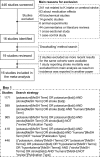

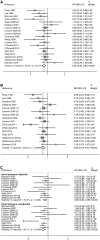
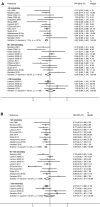
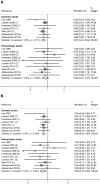
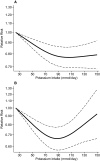
References
Publication types
MeSH terms
Substances
LinkOut - more resources
Full Text Sources
Other Literature Sources
Medical

